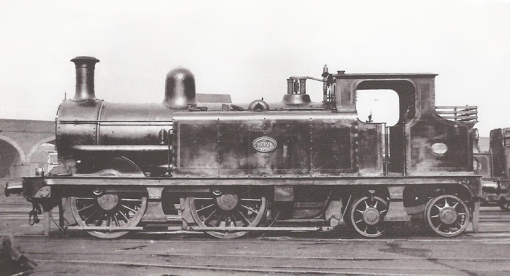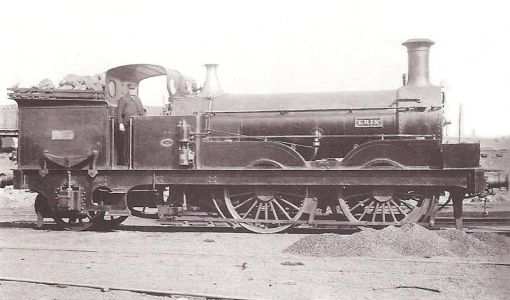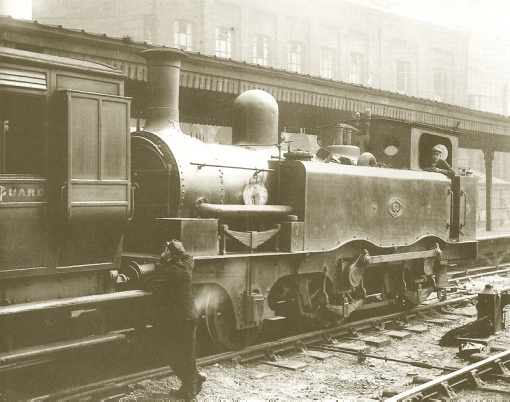Kirtley’s A2 class satisfied requirements for suburban tanks on the Chatham during the 1880s, but increased demand at the end of the decade meant that in August 1890 Kirtley sent the A2 class specifications out to prospective manufacturers inviting them to tender on eighteen new builds. Sharp Stewart won the contract, but within a month Kirtley had changed his mind and sent considerably revised specifications labelled ‘A3 Class’. By November, with the withdrawal of the final member of the Ruby Class, the title of the plans for the new locos was amended to ‘R Class’.
The new locos, delivered from September 1891, had a slightly smaller boiler, both in terms of length and diameter, with a greater firebox heating surface and higher working pressure. The driving wheels were 1″ smaller than the A2s, and other differences included a smaller coupled wheelbase, and smaller square-topped side tanks with an additional well at the base of the bunker. The condensing pipes left the smokebox from the upper part of the smokebox into a point midway along the tops of the tanks, in the style of Johnson’s Midland 0-4-4Ts, and the increased steam travel in these longer exposed pipes assisted condensation.
On inner suburban working, the new R Class were found to be as good as, if not better than any loco of the period working in Town; the powerful tanks were capable of good acceleration, and were free from slipping, which was used to good advantage on the steeply graded lines. Their Achilles heel proved to be the longer outer suburban services with the attendant faster runs and longer distances to which they were not particularly well suited – an unfortunate revelation, as it was the 0-4-2WT ‘Scotchmen’ employed on these duties which Kirtley had hoped the new class would replace.
All eighteen members of the class were initially sent to Battersea, though a couple of locos were soon migrated to another local shed.As with most LC&DR locos and stock, these locos will need to be scratchbuilt. Number 199 stands at Longhedge, apparently soon after entering service. The handsome LC&DR paint livery was gloss black with a broad blue-grey band edged with fine vermilion on the outside and a fine yellow line on the inside.
This concludes the précis of LD&CR locos on Basilica Fields in the 1890-98 period.




